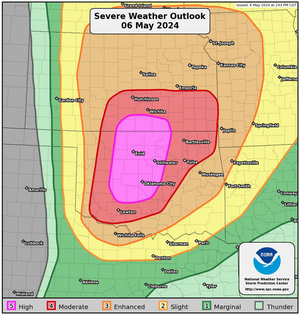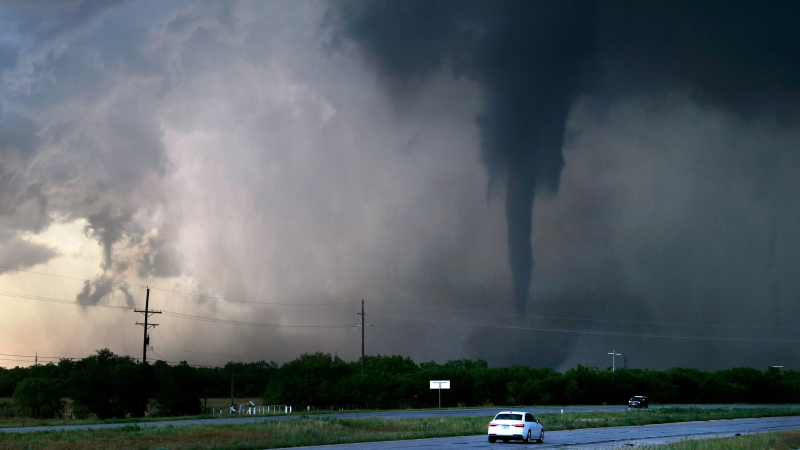What to do during a tornado warning: How to stay safe at home, outside, in a car
The National Weather Service is warning of a high risk of tornadoes and severe weather Monday night in the Central U.S. and urging the more than 45 million people at risk of severe weather to take measures to protect themselves.
With a greater-than 95% chance of at least two tornadoes somewhere tonight in Kansas, Oklahoma and Texas, it’s important to know what you can do to safeguard your life.
There’s no such thing as guaranteed safety, but the weather service says there are things you can do to increase your chances of surviving a deadly tornado.

How to be safe during a tornado warning
- Protect yourself from flying or falling debris, the single biggest life-threatening hazard.
- Seek shelter in the closest, safest interior or underground room.
- Always avoid windows.
- Don’t go to the windows or doors to look outside.
- Cover yourself with thick protective coverings, such as a mattress, sleeping bags, thick blankets or other protective coverings.
- Wear a helmet if you have one to protect your head from debris.
What to do if you’re in a building away from home
- Know where the bathrooms, storage rooms and other interior spaces without windows are.
- Go to the lowest floor and into a small center room, such as a bathroom or closet, or an interior hallway with no windows. Interior stairwells can be good places to take shelter.
- Cover yourself with thick padding, mattresses and blankets.
- Crouch as low as possible to the floor, face down.
- Cover your head with your hands.
- Wear a helmet if you have one.
What if you're in a mobile or manufactured home?
Leave, the weather service advises. Go stay with friends or family or in a public shelter in a permanent, sturdy building. Even with tie downs, a mobile home isn’t safe.

What if you're caught in a car or truck during a tornado?
There’s “no safe option” when caught in a vehicle, only options that are less dangerous than others. If you see a tornado far away, you may be able to escape by driving away at right angles to the storm.
- Seek shelter in a building or underground.
- If caught in high winds and debris, park quickly in a space outside traffic lanes.
- Keep your seatbelt on and put your head down and cover yourself with a blanket, coat or cushion.
- If you can get lower than the road level, you can leave your car and lie in that area, face down and covering your head with your hands.
- Avoid bridges and trees.
Tornadoes in the United States since 1950
If you have a basement
- Get under sturdy protection such as a heavy table or workbench
- Again, cover yourself with a mattress or sleeping protection
- Wear helmets to protect your head from flying debris are also a good idea, or use your arms and hands to protect your head
- Think about where the heaviest objects are on the floors above you and do not go under them.
What is the difference between a tornado watch and a tornado warning?
A watch means tornadoes are possible in the area. Consider it time to review your emergency plan and make sure your safe room is clear enough to hold everyone in the house and any blankets, mattresses or pillows for protection.
A warning means a tornado has been sighted or weather radar indicates rotation and a possible tornado. It represents imminent danger to life and property and urges immediate action to get to a safe space.
How many tornado deaths are there in the U.S. each year?
The weather service reported 83 tornado-related deaths last year. The most recent 10 year average is 47.
The deadliest year for tornadoes since 1950 was 2011, when 553 people died.
Disclaimer: The copyright of this article belongs to the original author. Reposting this article is solely for the purpose of information dissemination and does not constitute any investment advice. If there is any infringement, please contact us immediately. We will make corrections or deletions as necessary. Thank you.






